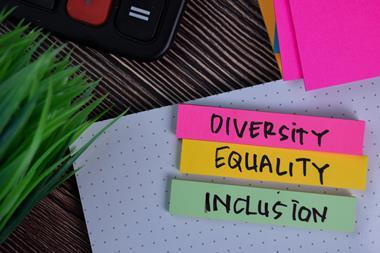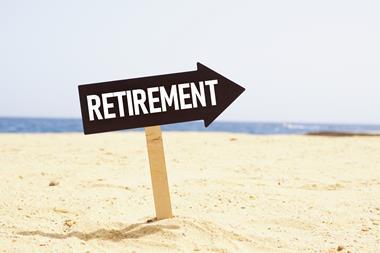At the ABI’s first virtual diversity summit event, industry professionals and allies took on difficult conversations around black inclusion, highlighting what the insurance sector is doing to increase diversity
The insurance sector ”needs to step up its efforts” around diversity and inclusion (D&I), particularly for individuals with a black heritage background, as “progress is simply too slow”.
This was the key message reverberating at the ABI’s first virtual diversity webinar held on 9 October, titled ‘Time for change: improving ethnic diversity in insurance and long-term savings’.
Explaining why D&I is so crucially important, Yvonne Braun, the ABI’s director of policy for long-term savings and protection, as well as executive sponsor for D&I, identified four main driving factors.
She said: “It’s about achieving the best performance in our organisations, reflecting the community we serve, there’s increasing interest from the financial regulator and then fairness, and progress is simply too slow.
“We know from McKinsey reports that ethnically more diverse companies have a demonstrable edge over their competitors, they’re better at attracting and keeping top talent, they’re better at making decisions and they’re more innovative, so actually it’s in our enlightened self-interest to increase diversity.
“Our products and services are used by people from very diverse backgrounds, right across society. We’re bound to create more appealing products if the make up of our companies reflects the make up of the customers that we serve. The FCA said only last month that diversity and inclusion underpins healthy cultures. And finally for me it is a matter of fairness.”
Braun continued by detailing the work the ABI is doing to address diversity and inclusion, explaining that the association can only “act as a catalyst” for the sector “if we have credibility ourselves and we put our own house in order first”.
The ABI announced earlier last week that it has signed the Race at Work Charter, organised by Business in the Community, as well as developed a two-year plan to update its existing internal inclusion strategy.
“There really is general recognition that our sector needs to step up its efforts and drive this with a great deal of urgency,” she added.
Time for change
The webinar was hosted by Daniella Jenkins, executive director of The WOW Foundation, a gender equality charity. She believes that the “insurance industry is already tackling [D&I] head on”.
She continued: “[This is really about] identifying this moment as a time for change, to redress the imbalances.
”The insurance industry is already tackling this head on. The ABI and 32 other insurers have already signed up to the Race at Work Charter and even this event is an important step to opening up what can feel like a really difficult conversation.
“I want to be really clear. Race is not a problem, racism is. And it’s important that we continue to focus on the mechanisms through which inequalities become institutionalised.
”That means we have to look beyond individual behaviours and focus on our business practices. Data, supply chains, organisational development, recruitment, retention to really open up the insurance industry to the opportunities that come with diversity.”
Attendees also got to hear some case study examples of insurance organisations that are driving the D&I agenda.
This includes insurer Zurich – head of people Steve Collinson explained how 85% of the workforce now declare their ethnicity, which the firm can then use to publish its ethnicity pay gap data.
Zurich is also a signatory of the Race at Work Charter and Collinson added that the organisation is currently exploring options around all-staff training, a development programme pilot for ethnic minority staff and recruitment training for managers.
Rose St Louis, a director at KPMG, explained some of her firm’s initiatives too, including a reverse mentoring programme – which she participates in – and an allyship programme. She added that feedback from employee resource groups is also invaluable, as well as senior managers taking the lead in setting the tone for D&I.
Business in the Community’s race director Sandra Kerr additionally shared statistics from her organisation’s Race at Work Survey, which was most recently conducted in 2018. She explained that for many, they view their ethnicity as a career roadblock.
The associated Race at Work Charter has five principles, said Kerr. This includes senior leadership advocacy, capturing data, zero bullying and harassment, manager responsibilities and allyship and the progression of ethnic minority talent.
Personal journey
The online event also included the personal perspectives of two black men working within the insurance and long-term savings sector – Gavin Lewis, managing director and head of UK local government pension schemes (LGPS) at BlackRock, and Dawid Konotey-Ahulu, non-executive director at Redington.
For Lewis, diversity and inclusion needs to become “the language of business”. To garner more buy-in from workforces, diversity champions should start by highlighting the performance benefits of inclusion, rather that trying to appeal to people’s values, as these are “not homogenous”.
He explained: “The central issue is that D&I, it’s become a workplace issue. I don’t understand how we can have equality in a workplace if we don’t have equality in society. I don’t understand how we can have one without the other.
“The problem that you have with diversity and inclusion is that the way it has been positioned within organisations is that there is a moral obligation to do this and I think that will win over 10%, 15% of your workforce.
”There’s this big chunk in the middle that will probably sit on the fence. Then you’ve got another 5% who won’t believe it. That reflects society.”
Konotey-Ahulu, on the other hand, reminded attendees that the insurance sector played a heavy role within the slave trade and that now, industry leaders need to take decisive action – he added that chief executives will have failed if they have not addressed D&I within the next three to five years.
He cited seven reasons why he believes black individuals are not often seen in c-suite roles.
This includes a lack of suitable applicants, organisations believing their BAME statistics are already good and therefore no further work is needed, a lack of understanding around unconscious bias, not enough data to inform decision-making, companies believing they do not have an issue in this area, or that think the conversation is too difficult and, lastly, firms that say they are working on D&I but they aren’t quite there yet.
Despite this backdrop, Konotey-Ahulu thinks it is an “exciting” time for the insurance industry due to the recent groundswell surrounding diversity and inclusion, influenced by the Black Lives Matter movement.

Hosted by comedian and actor Tom Allen, 34 Gold, 23 Silver and 22 Bronze awards were handed out across an amazing 34 categories recognising brilliance and innovation right across the breadth of UK general insurance.





















































No comments yet